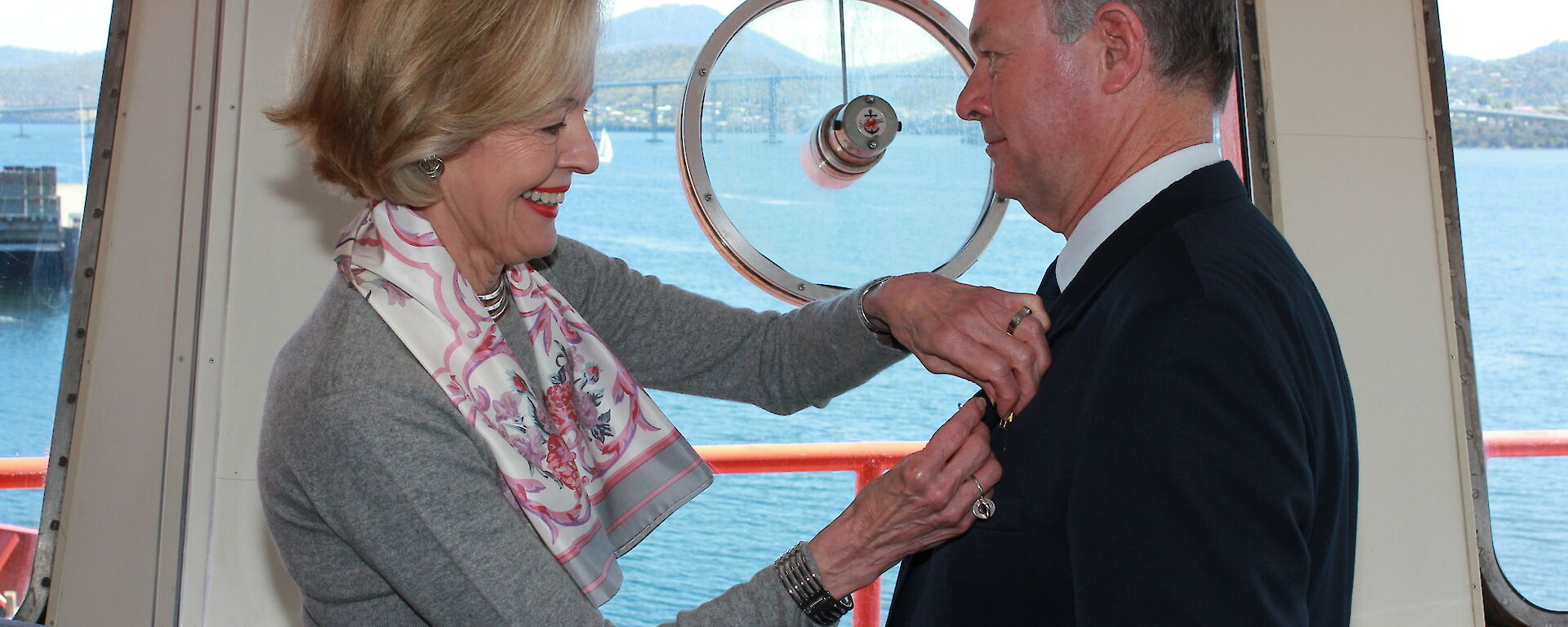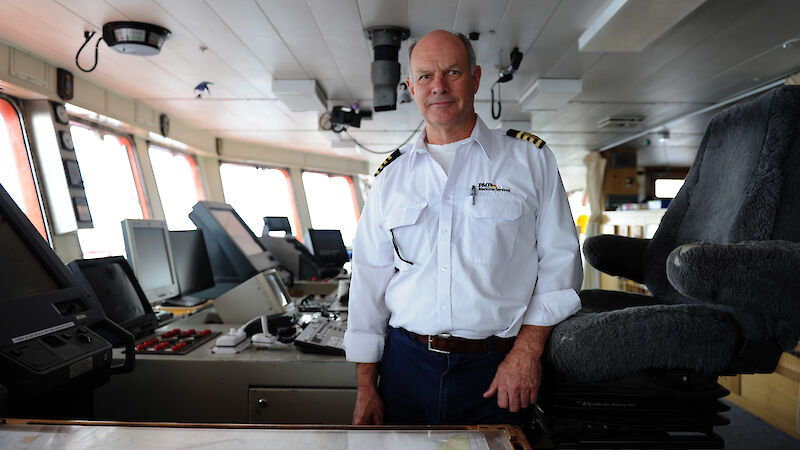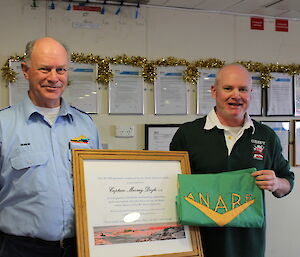Captain Murray Doyle has been a familiar face to those commuting back and forth to Antarctica on the Aurora Australis for the last 20 years.
But after some 50 voyages as Master and Chief Officer of the iconic orange icebreaker, Captain Doyle concluded his exciting, sometimes frightening, and award-winning career, with a happily uneventful resupply of Casey station in December 2015.
“Even though the way into Casey was eight or nine tenths ice, it was brashy stuff around big floes, so we could push the floes out of the way… it was a pretty easy voyage,” he said.
When you spend as much time navigating the Southern Ocean as Captain Doyle has, however, there’s plenty of excitement to be had; not all of it welcome. Once, on a late season trip to Davis, the ship was caught in a blizzard and wedged between two icebergs.
“I called back to Australia and declared it an emergency because the ship was rotating as the icebergs alongside us moved,” Captain Doyle said.
“I was worried these big sheets of ice would get pushed up against the propeller. Instead they made a V shape around the stern of the ship and protected us as they rotated.
“We found out later that the ice pushing underneath the hull had caused quite a bit of damage in the tanks, though we were still watertight, so we weren’t in any real danger. The closest ship was three weeks away, so we were lucky we got out. That was a scary moment.”
Other memorable occasions included two resupplies at Mawson — one when the harbour was blocked by an iceberg and refuelling was done by running the fuel hose over the peninsula, and another completed by long-range fly-off, when the sea ice didn’t break out.
Captain Doyle also faced challenges during the early season Sea Ice Physics and Ecosystems eXperiment (SIPEX) voyages in 2007 and 2012 (Australian Antarctic Magazine 23: 4–11, 2012), including becoming beset in sea ice for about two weeks and losing a few scientific samples when sea-ice floes unexpectedly broke up. Mostly, however, it’s the people and the work that make the voyages memorable.
“Marine science voyages are very enjoyable, with all the mixing of people,” he said.
“I've met and worked with a real mix of people over the years, from scientists, tradies and station leaders, to voyage management. You're always working alongside people and often meet the same people on subsequent voyages, so you build really good relationships. It’s very satisfying to see people succeed and achieve what they are aiming for.”
Prior to his appointment on the Aurora Australis Captain Doyle worked on oil tankers off the Australian coast, Indonesia and the Arabian Gulf. Despite this maritime experience, the unique challenges of navigating an icebreaker meant looking at things quite differently.
“It’s not just a matter of going from point A to point B; you've got to be able to read the ice to know what you can get through and what you can’t,” he said.
Fortunately, charting a path through the ice has been made a lot easier with advances in satellite imagery. When he started on the Aurora Australis, ice charts were provided by NASA, but the information was almost a week old by the time the charts arrived on the ship and it was a real “guesstimate” of ice thickness and concentration. Today, satellite images processed through TeraScan and Polar View and interpreted by sea ice specialists at the University of Tasmania, provide a reliable, next-day assessment of ice conditions.
“The first season that TeraScan was available to us we used it on a trip from Davis to Mawson,” Captain Doyle said.
“We would usually go a fair way north and come around all the ice, but we got some very good images and could see there were some big leads going east to west, so we just shot straight across. We saved three days of steaming on that trip to Mawson, and up to 90 000 litres of fuel.”
An innovative trial using a quadcopter ‘drone’ for sea ice navigation (see Drone use set to rise in Antarctica) on Captain Doyle's last trip south, gave a little taste of the future.
“That was very interesting. To be able to throw a drone up into the air and get a good idea of what was ahead was very useful. I think we will see more of that technology; it’s the technology of the future.”
Captain Doyle’s commitment to the goals and people of the Australian Antarctic program has made an important contribution to the ongoing success of Australia’s activities in Antarctica. In recognition of this, in 2011 he was awarded an Antarctic Medal for his contribution to scientific and logistic activities in Antarctica as the Master of the Aurora Australis.
He is philosophical about the imminent retirement of the ship and its replacement with a new icebreaker.
“There’s going to be a 30 year gap in technology. A lot of things have happened since the Aurora Australis was built, so the new ship should be much more efficient and have greater capabilities,” he said.
While he has plenty of ideas about how the Aurora Australis could spend her retirement from Antarctic duties, he also has plenty of plans for his own retirement, including volunteering for maritime causes and indulging his love of travel.
“A couple of years back I did the Camino in Spain, and I’d like to do one of the other Camino walks, in Portugal or elsewhere,” he said.
“I wouldn’t mind visiting South Georgia and the Falkland Islands, just for something different. Although I don’t know how I’d go on a tourist ship, with all these people standing around in groups photographing everything that moves!”
Jill Brown
Australian Antarctic Division




